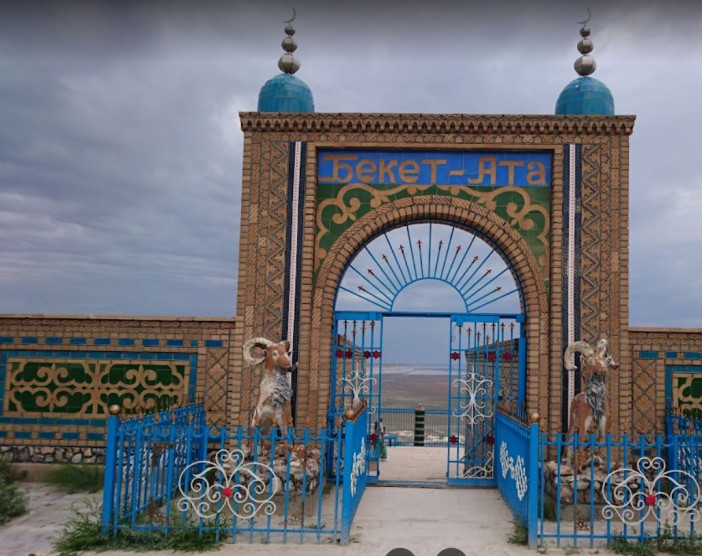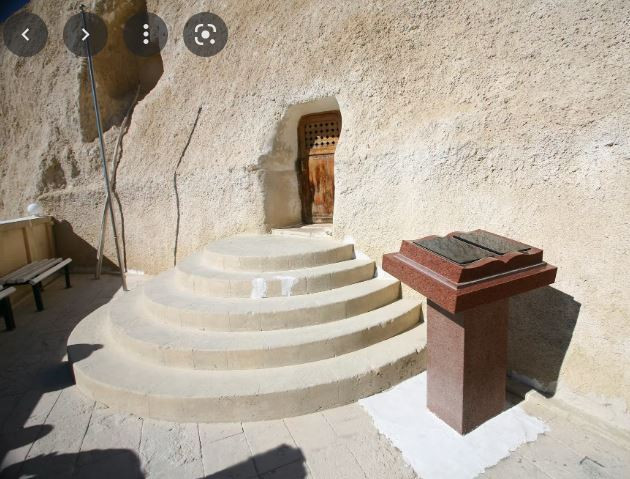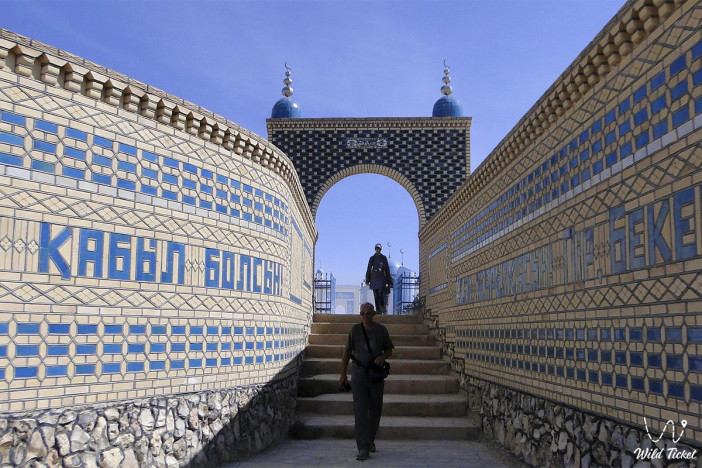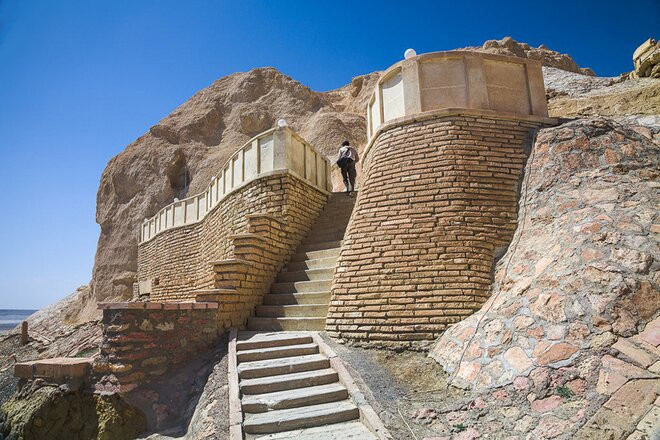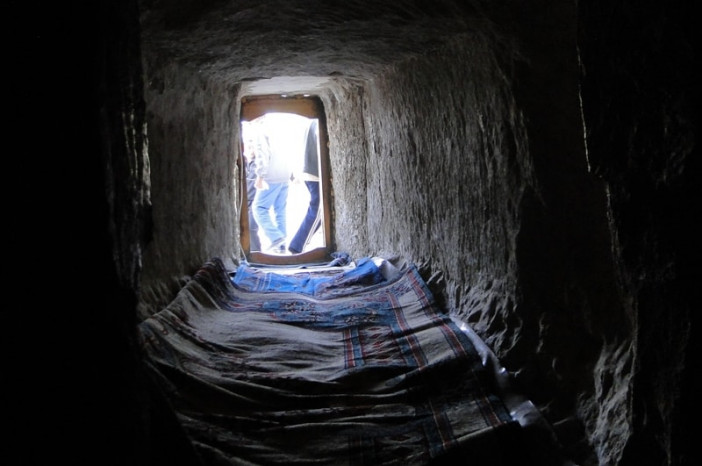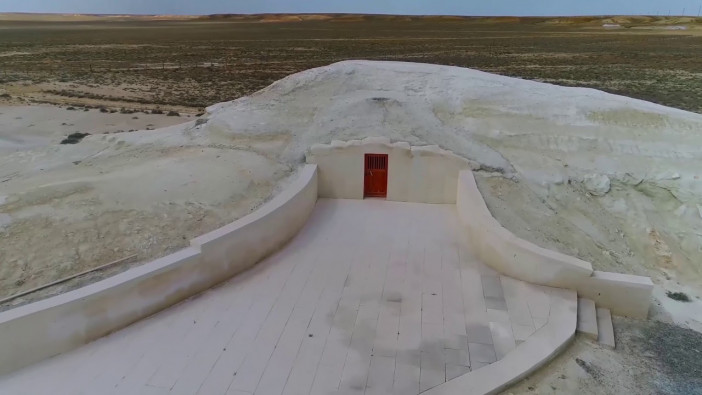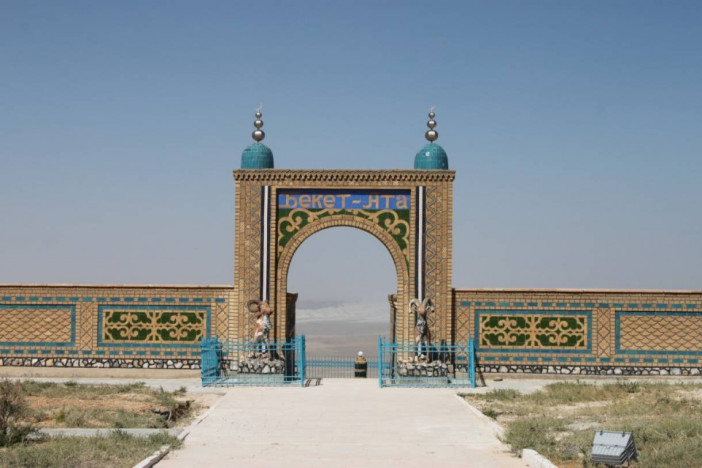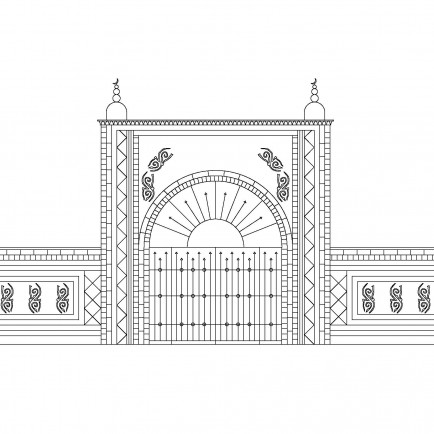Beket Ata underground mosque
History
Some 285km east of Aktau, Beket-Ata is an important and extremely popular place of pilgrimage for those wishing to visit the underground mosque and final resting place of Sufi mystic and teacher, Beket-Ata (1750–1813). The mosque is near the bottom of a picturesque desert canyon and the journey to Beket-Ata involves traversing some spectacular steppe and desert scenery.
Urban and Architectural
We find in one place from the side of the river a hole that looks more like a wolf hole, into which, however, a person, although with difficulty, can climb through. This hole extends into the earth no more than 3 fathoms (1 fathom = 2.13 m - Ya. F.), in the forward direction to the south-west, and then leads into a round room with 2.5 fathoms in diameter and up to 4 arshins (1 arshin = 0.71 m - Ya.F.) height.
Its ceiling is a flat dome, in the middle of which a narrow hole is drilled to the surface of the earth, transmitting weak light into the room. On both sides of the room, at the very entrance to it, two filled holes are visible; according to the Kirghiz, it was a digging with fresh water.
The walls of this room are not carved in the form of a regular circle, but with 6 symmetrically located recesses, of which one, which is located against the door, is slightly wider and deeper than the others and in general is very similar to those made in Tatar mosques.
There are no floors in the rooms; the walls are rough, but quite right. The soil in which this mosque is hollowed out consists of strong chalk.
Description
Lobby of the mosque has a circular plan shape (diameter is about 4.5 m). The ceiling has a flat dome shape. The whole interior imitate the Kazakh yurt. According to the presence of mikhrab niches in the south-west wall, it is the prayer hall. A semicircular room was adjoined from the west side, in which the corner pillars of the floor level is raised as a Sufi.
References
https://www.lonelyplanet.com/kazakhstan/mangistau/attractions/beket-ata/a/poi-sig/1578985/1325954
https://silkadv.com/en/content/history-akmechet-alekseev-1853
https://culturemap.kz/en/object/podzemnaya-mechet-beket-ata
Details
Location
285km east of Aktau, Kazakhstan
Year of Build
1853
Drawings
Map
History
Some 285km east of Aktau, Beket-Ata is an important and extremely popular place of pilgrimage for those wishing to visit the underground mosque and final resting place of Sufi mystic and teacher, Beket-Ata (1750–1813). The mosque is near the bottom of a picturesque desert canyon and the journey to Beket-Ata involves traversing some spectacular steppe and desert scenery.
Urban and Architectural
We find in one place from the side of the river a hole that looks more like a wolf hole, into which, however, a person, although with difficulty, can climb through. This hole extends into the earth no more than 3 fathoms (1 fathom = 2.13 m - Ya. F.), in the forward direction to the south-west, and then leads into a round room with 2.5 fathoms in diameter and up to 4 arshins (1 arshin = 0.71 m - Ya.F.) height.
Its ceiling is a flat dome, in the middle of which a narrow hole is drilled to the surface of the earth, transmitting weak light into the room. On both sides of the room, at the very entrance to it, two filled holes are visible; according to the Kirghiz, it was a digging with fresh water.
The walls of this room are not carved in the form of a regular circle, but with 6 symmetrically located recesses, of which one, which is located against the door, is slightly wider and deeper than the others and in general is very similar to those made in Tatar mosques.
There are no floors in the rooms; the walls are rough, but quite right. The soil in which this mosque is hollowed out consists of strong chalk.
Description
Lobby of the mosque has a circular plan shape (diameter is about 4.5 m). The ceiling has a flat dome shape. The whole interior imitate the Kazakh yurt. According to the presence of mikhrab niches in the south-west wall, it is the prayer hall. A semicircular room was adjoined from the west side, in which the corner pillars of the floor level is raised as a Sufi.


